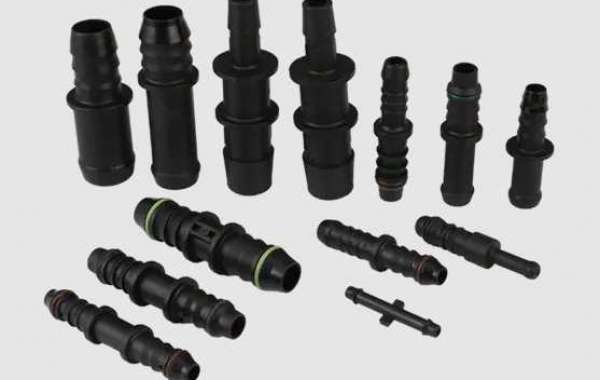Among these, automotive fuel quick connectors stand out for their critical role in managing fuel delivery efficiently and safely.
1. The Significance of Fuel Quick Connectors:
Automotive Fuel Quick Connectors are essential components in your vehicle's fuel system, serving as the interface between various fuel-related components such as fuel lines, hoses, and fuel tanks. They facilitate the efficient and secure transfer of fuel from the tank to the engine, ensuring optimal combustion and engine performance.
2. Types of automotive fuel quick connectors :
Push-to-Connect Quick Connectors: These connectors are designed for easy and tool-free installation. They feature a push-button mechanism that allows for quick disconnection when necessary. Push-to-connect connectors are commonly used in fuel lines and can be found in both low-pressure and high-pressure applications.
Threaded Quick Connectors: Threaded connectors require the use of tools to secure and disconnect them. They offer a more robust connection and are often used in high-pressure fuel systems, such as those found in diesel engines and heavy-duty vehicles.
3. Installation of automotive fuel quick connectors :
Proper installation of automotive fuel quick connectors is crucial for the safe and efficient operation of your vehicle. Here are the general steps for installing automotive fuel quick connectors :
Safety First: Always work on your vehicle in a well-ventilated area, away from open flames or sparks. Wear appropriate safety gear, including eye protection and gloves.
Identify Components: Ensure you have the correct fuel quick connectors for your vehicle's make and model. Also, identify the inlet and outlet sides of the connectors.
Prepare the Ends: Trim the fuel line or hose ends cleanly and evenly. Avoid jagged or uneven cuts, as they can affect the sealing and performance of the connectors.
Lubricate O-Rings: Apply a small amount of clean engine oil or fuel to the O-rings or seals on the connectors. This helps ensure a proper seal and ease of assembly.
Connect the Components: Push the connectors onto the fuel line ends firmly until you hear a click or feel them securely lock into place. If using threaded connectors, use the appropriate tool to tighten them to the manufacturer's specifications.
Test for Leaks: After installation, turn on the vehicle and check for fuel leaks around the connectors. If you notice any leaks, shut off the engine immediately and address the issue before driving the vehicle.
4. Maintenance automotive fuel quick connectors :
Regular maintenance is essential to keep automotive fuel quick connectors in optimal condition. Here are some maintenance tips:
Inspect for Wear and Damage: Periodically inspect the connectors for signs of wear, damage, or corrosion. Replace any connectors that show signs of deterioration.
Check Seals: Ensure that the O-rings or seals on the connectors are in good condition. Replace them if they appear cracked or worn.
Clean Connections: Keep the connectors and surrounding areas clean from dirt, debris, and fuel spills. Use a mild detergent and water to clean the connectors if needed.
Inspect Fuel Lines: Regularly inspect the fuel lines and hoses connected to the quick connectors for wear, abrasions, or signs of leakage. Replace any damaged components promptly.
Follow Manufacturer Recommendations: Always adhere to the manufacturer's recommendations for maintenance and replacement intervals for automotive fuel quick connectors and related components.
5. Safety Considerations:
Working with fuel systems can be hazardous, so it's crucial to follow safety guidelines:
Fuel Safety: Be cautious when working around fuel. It's highly flammable, so avoid smoking or open flames in the vicinity.
Ventilation: Work in a well-ventilated area to prevent the buildup of fuel vapors.
Electrical Safety: Disconnect the vehicle's battery before performing any work on the fuel system to reduce the risk of electrical sparks.
6. Upgrading or Replacing automotive fuel quick connectors :
If you're considering upgrading or replacing your vehicle's automotive fuel quick connectors , consult your vehicle's manufacturer or a qualified mechanic. Upgrading to higher-quality connectors or those designed for increased performance may enhance fuel efficiency and engine performance.
In conclusion, automotive fuel quick connectors are essential components that play a critical role in maintaining your vehicle's fuel system's efficiency and safety. Understanding the types, proper installation, and maintenance of these connectors ensures that your vehicle's fuel system operates smoothly and reliably. By following safety precautions and staying proactive in maintaining your fuel quick connectors, you can enjoy a well-maintained and efficient vehicle for years to come









